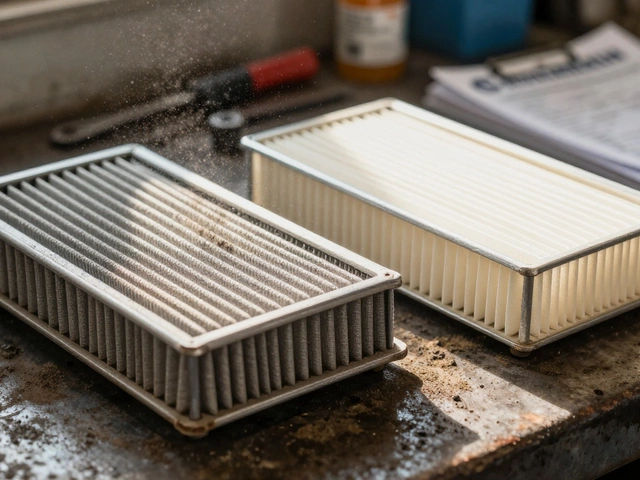So, you just swapped out your old spark plugs, thinking your car would purr like a kitten. Instead, you're dealing with weird noises, rough idling, or even worse gas mileage. What gives? It turns out, there are some pretty common reasons your ride might feel off after a spark plug change.
One biggie is installation errors. Yep, it seems simple, but if those plugs aren’t seated just right, your engine might throw a fit. And then there's the issue of compatibility. Not all spark plugs are made equal, and grabbing the wrong ones can mess with how your engine performs. It's like trying to fit square pegs into round holes.
- Common Reasons for Poor Performance
- Checking for Installation Errors
- Understanding Spark Plug Compatibility
- Practical Tips to Ensure Smooth Running
Common Reasons for Poor Performance
Alright, let's get to the nitty-gritty of why your car might run worse after changing those pesky spark plugs. The first culprit often points to installation errors. Who knew that torque would be such a diva? If the spark plugs aren't tightened to the right specifications, you'll notice misfires or poor performance. Using a torque wrench can help ensure they're snug but not over-tightened.
Then there's the issue of dirty or damaged connectors. Even if you've got shiny new plugs, engine performance can tank if the connectors aren't clean or if they're damaged during the swap. A quick visual inspection before you replace each plug can save you a headache later.
And let's talk about compatibility. Not all spark plugs are created equal. Selecting the wrong size or type can lead to inefficient firing in the engine. Imagine trying to run a marathon in the wrong shoe size. Check your vehicle's manual or consult a professional to ensure you're using the right plugs.
Last but not least, if your new plugs are of lower quality or don't match the heat range specified for your engine, this can cause detonation or pre-ignition issues. High-quality plugs matched to your vehicle's requirements almost always offer better results.
To diagnose these issues, a test drive combined with a quick hands-on check of each plug and connector can sometimes pinpoint problems right away. Always keep an eye out for poor idling, decreased acceleration, or unexpected noise after a change.
Checking for Installation Errors
Okay, so your car's not quite humming the way you hoped after changing those spark plugs. First thing's first—rewind and double-check the installation. Even if you're handy with tools, it's surprisingly easy to miss a trick. Start with the seating of those plugs. If they’re not threaded right or are too loose, your engine performance could seriously suffer.
Take a look at your wrench technique. Overtightening can crack the spark plug’s ceramic casing, and undertightening may lead to poor contact. You want it just right, like Goldilocks with her porridge. Next, think about the torque spec? A torque wrench is your best friend. If you're scratching your head over what it is, it measures how tight you're screwing things. Most cars have a specific torque spec for their plugs, so grabbing that car manual might not be a bad idea.
Another pro tip? Inspect the spark plug wiring. It seems trivial, but misrouted wires or damaged insulation could mess with spark delivery. Double-check that the wires are connected securely to the plugs and the appropriate coil for a smooth ignition sequence.
Lastly, take a moment to inspect the plug caps. These little covers need to sit snugly on the spark plugs without any gaps. If there’s a wiggle, it could mean you’re not getting the proper connection, leading to misfiring or stalling issues.
- Ensure plugs are snugly fitted but not overtightened.
- Compare against your vehicle's manual for proper torque. Grab a torque wrench if available.
- Check ignition wires for correct routing and secure connections.
- Inspect the plug caps for any loose fitting.
Taking the time to revisit these basic but crucial checks can often cure a lot of post-installation headaches. It's a simple way to keep your car running smoothly and save a heap of stress down the road.

Understanding Spark Plug Compatibility
Alright, so not all spark plugs are created equal. It's not just about grabbing any old spark plug off the shelf. Your car might take a specific type, brand, or size of spark plug, and using the wrong ones can make it run like a slug.
First off, let’s talk materials. Spark plugs generally come in three types: copper, platinum, and iridium. Each material has its own heat tolerance and life span. For example, iridium plugs last longer than copper ones, but they come with a heftier price tag. If your engine is designed for iridium plugs, sticking in copper ones might save money up front but can lead to performance issues down the road.
“The type of spark plug used in your vehicle can significantly affect engine performance and efficiency,” advises James Walker, an automotive expert and regular contributor to Car Mechanics Magazine.
Next, think about heat range. This is all about how well a spark plug can transfer heat from the tip into the cylinder head. Getting the wrong heat range can either make the plug too hot, risking pre-ignition, or too cold, leading to fouling. Both scenarios can mess with your engine performance.
And don't forget the gap. The spark gap is crucial for proper ignition. If it's too wide or too narrow, you’re looking at misfires or starting problems. Always check and adjust the gap when installing new plugs as needed.
Here's a pro tip: Take a peek at your owner's manual or check online for your car model to get the right specs for your spark plugs. Even if you’ve been wrenching for years, sometimes a refresher is all it takes to avoid a costly mistake.
| Spark Plug Material | Pros | Cons |
|---|---|---|
| Copper | Cost-effective, excellent conductivity | Shorter lifespan |
| Platinum | Longer life than copper, moderate cost | Less conductive |
| Iridium | Longest lifespan, best performance | Expensive |
Keeping these things in mind will not only give you a smoother ride but save you from head-scratching troubleshooting sessions later. So, when you're out buying new plugs, go the extra mile to ensure they’re the right fit for your beast under the hood.
Practical Tips to Ensure Smooth Running
Getting your car back to running smoothly after changing spark plugs can save you a lot of frustration. Here's what you need to focus on if your vehicle's acting up after the change.
First things first, double-check those spark plugs. Make sure they're snugly fitted in their respective places. Loose plugs can lead to misfires and weird engine behavior. Give those connectors a once-over too, ensuring they’re properly attached and not wiggling around.
Next, let’s talk about the spark plug gap. You might not have thought of it, but the distance between the electrodes on a spark plug is crucial for it to fire efficiently. Grab a feeler gauge, an essential tool for this, and measure the gap to make sure it matches the specifications in your car's manual.
Using the right type of spark plug matters as well. Different engines need different kinds, so using ones that don't match your car's specs can mess with engine performance. Always check your car's manual to see the recommended type. This might include info on the material, such as copper or iridium, which has an impact on longevity and performance.
- Check Installation: Ensure each spark plug is correctly installed with the right torque.
- Verify Compatibility: Compare the new plugs with the old ones for the type and size.
- Inspect for Damage: Even a new spark plug can get damaged during handling, so a quick visual check can work wonders.
- Consider Heat Range: Every spark plug has a heat range. If yours are too hot or too cold for your engine, it won't run right.
Finally, pay attention to the connections and wires. Sometimes old, brittle wires might not handle the change well, and swapping them can make a big difference. Taking these steps not only ensures your car runs better but can prolong the life of the engine. Your car deserves the best care, and with these car maintenance tips, you'll have it running smoothly in no time.




